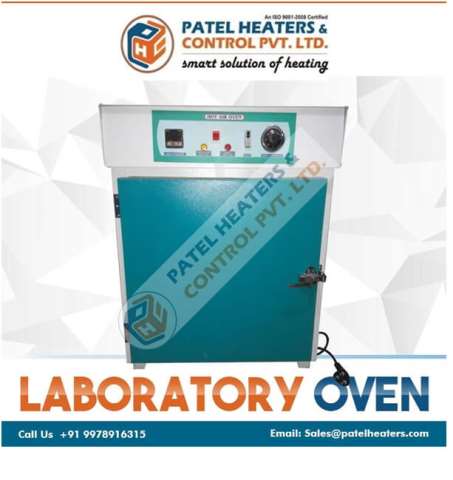Laboratory ovens are common pieces of equipment found in most laboratories and are used in high-forced volume thermal convection applications. They have even heating in the whole unit, regardless of the temperature that is set. Lab ovens come in a range of shapes and sizes as the result of the need for customization, which has resulted in model differentiation and proliferation. This is a good thing, but many people become perplexed while attempting to decide which of a plethora of lab ovens spans the entire scope of their application criteria.
A decent Laboratory Oven can last for several years of constant heavy use, so it is worthwhile to put some effort and time into choosing the right oven for your needs. Most lab ovens are planned to work at temperatures ranging from room temperature to about 300 degC. Higher-temperature ovens are often used for advanced applications in physics, material handling, and electronics. Annealing, drying, die-bond curing, sterilizing, and polyimide bakingare some of the other applications.
This short guide will take you through a couple of simple consideration measures that will help you narrow down your potential selections to lab oven models that fulfill both your realistic and technological performance standards.
- Choosing a chamber
The volume and proportions of the chamber are critical considerations to note. Consider the space criteria for the chamber of your oven. Consider the size&number of samples that must be placed in the lab oven, and then determine which ovens have a sufficient interior area. Choosing one that is bigger than what you want isn’t necessarily a smart choice, since you’ll have to use more energy to attain the optimal temperature, and it will take up more space in your lab. Choosing a smaller one, your workflow is hampered.On the other hand, if the sample volume is high but the sample size is small, it could be more cost-effective to purchase several smaller ovens rather than a single large unit.
- Type of lab ovens&application
There are various oven types to choose from depending on the desired application.A gravity convection oven may be used for general drying or baking. For eg, if you want to cure various materials, you would require a heavy-duty batch oven,If you want to melt the wax, use a continuous oven at a lower temperature and a vacuum chamber oven could be the best option if the oven’s needs require drying, desiccating moisture determination, and outgassing.
- Heating uniformity
In a lab oven, uniformity refers to how consistent the temperature is at different points throughout the chamber. The attractive characteristic is that any point within the oven is the same temperature as what is seen on the display. It’s likely to get bad samples and faulty goods if a batch is unevenly heated. Don’t trust the audacious commercial promises made unilaterally by anyone. Request approved test results or request a demonstration of heating uniformity.
- Airflow
The air-flow within an oven is important for temperature uniformity,curing&drying. Horizontal flow is seen in some ovens, others vertical flow, and in some a hybrid of the two. Some also merge them all and encourage users to switch between modes based on what they choose to accomplish.
- Power consumption
The lab oven is one of the most significant energy loads that can increase the utility bill. When using several ovens, even the smallest change in the energy efficiency of the heating system will make a big difference. The oven’s doors and walls must be thermally insulated, as leaking the induced heat out of the chamber wastes electricity that you will still have to pay for. This could save you a lot of money over the appliance’s lifespan.
- Cleaning&upkeep
It is important to clean your ovens&perform repair sessions with limited disturbance to your laboratory’s operations. Choose a lab oven with quickly removable trays,smooth&round edges to prevent substances from accumulating, and a door that opens freely enough to allow for quick cleaning. If you use your oven often, calibrate it at least once a year.
Conclusion
When searching for a new laboratory oven, Laboratory Oven Manufacturers in India, make sure to remember all of the points mentioned above. We hope this post will assist you in making sound choices when purchasing the next laboratory oven. Please contact Patel heater’s experts if you need assistance with any of the applications.
Don’t Miss: Need to know the importance of Laboratory Oven


